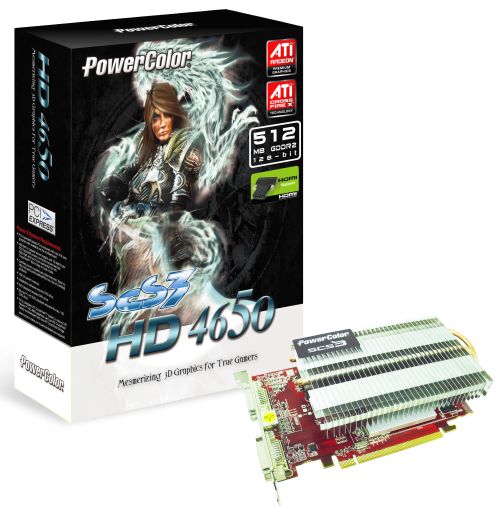Radeon HD 4650

There are no clear frequency specifications, so different manufacturers can equip such video cards with memory with an operating frequency of 800 or 1000 MHz, but still this greatly reduces the memory bandwidth relative to the older model. The operating frequency of the RV730PRO chip is reduced and is at around 600 MHz. The core has 320 stream processors, 32 texture units and 16 blending units. The basis of this GPU's success lies in the fact that in terms of processing power it very closely matches the potential of the RV670, on which the Radeon HD3850 and Radeon HD3870 were based. It is noteworthy that both RV670 and RV730 are made according to the 55-nm process technology, but the power consumption and heat dissipation of the new chip is much lower.
The Radeon HD 4650 supports HD video hardware acceleration with ATI Avivo technology. The video card works on a high-speed PCI Express 2.0 interface. DirectX 10.1 is supported, unlike NVIDIA competitors which only support DirectX 10.0. But this advantage is not significant due to the insufficient level of performance for the new API. Unlike the older graphics card, the Radeon HD 4650 lacks CrossFire support.
Specifications ATI Radeon HD 4650
| Name | Radeon HD 4650 |
| Core | RV730PRO |
| Process technology (µm) | 55 |
| Transistors (million) | 514 |
| Core frequency | 600 |
| Memory frequency (DDR) | 500 (1000) |
| Bus and memory type | DDR2 128-bit |
| Bandwidth (Gb/s) | 16 |
| Unified shader blocks | 320 |
| Frequency of unified shader units | 600 |
| TMU per conveyor | 32 |
| ROP | 8 |
| Shader Model | 4.1 |
| Fill Rate (Mpix/s) | 4800 |
| Fill Rate (Mtex/s) | 19200 |
| DirectX | 10.1 |
| Memory | 512.1024 |
| Interface | PCIe 2.0 |
The Radeon HD 4650 turned out to be much weaker than the older model Radeon HD 4670. In some tests, there is almost a twofold difference in performance between these video cards. At the same time, the cards also have a twofold difference in the memory frequency, only 800 MHz for the younger model and 2000 MHz for the older model. It seems that the memory bandwidth greatly "cuts" the overall performance level and does not allow the full potential of the RV730 graphics chip to be realized. In comparison with the direct competitor from NVIDIA, the situation is ambiguous. The GeForce 9500 GT sometimes overtakes the Radeon HD 4650, but in the most difficult tests it already shows lower results.



